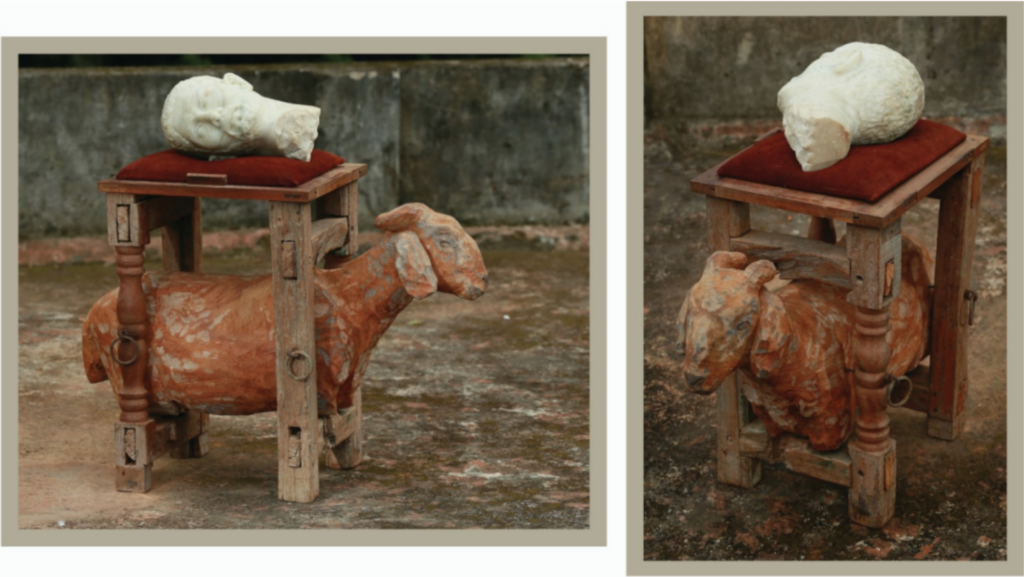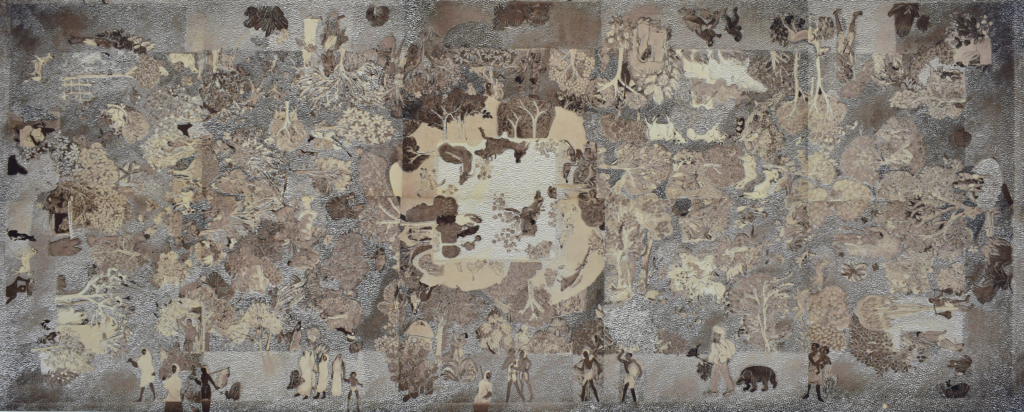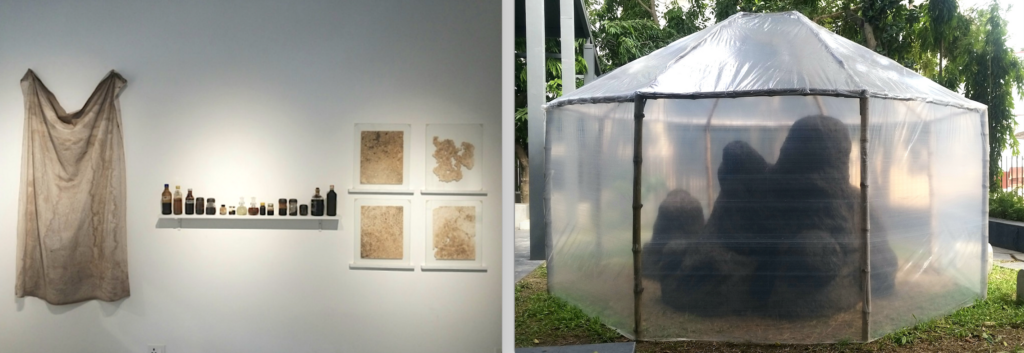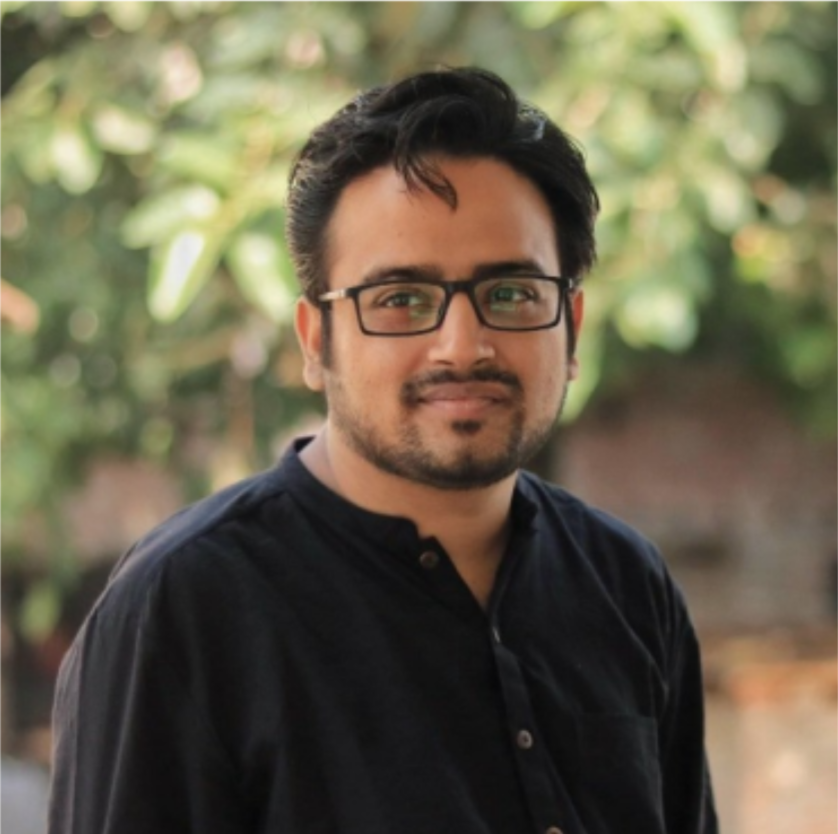‘Takshila Fine Arts Scholars Show’ by Shreyo Sengupta | Santiniketan, India
We are pleased to feature a piece written by research scholar Shreyo Sengupta on the Takshila Fine Arts Scholars Show (July 2022) designed by EAS network artist Arpita Akhanda. Congratulations to the five scholarship recipients!
In a very short period of time, Arthshila Santiniketan has emerged as one of the important destinations for the artists and art lovers in West Bengal through their various activities at Shyambati, Bolpur. The Takshila fine art scholar’s show was established to encourage young students with master's degrees and artists working in and around Santiniketan. In 2020, the Takshila education society decided to start an annual scholarship programme for five artists from the department of painting, sculpture, graphics art/printmaking and art history with 12 months of tenure. Ammu. S, Amaldev S. Narayanan, Ghanashyam Latua, Maksud Ali Mondal, and Santanu Chakraborty are those five recipients of the scholarship this year, who showcased their artworks at Arthshila Santiniketan from 15th July to 31st July 2022.

Ammu.S, the only woman artist in this show, is pursuing her master's degree in the Graphics and Printmaking Department at Kala-Bhavan. She has explored the relationship between nature and women in this social structure. Her works are inspired by post-minimal feminine aesthetics, as she was able to formulate a simple yet very powerful visual expression. She has chosen the process of cyanotype with her own methodology incorporating some added organic colours with it. The impressions of mundane and found objects in the process come as a metaphor for a transformation in the life of a woman and phases of the human psyche as well. We often tend to overlook some of the minute objects around us like delicate petals, plants, the feather of a bird swinging through the air, or a rainy day. These postcards or cyanotype impressions take us back to those fleeting memories and their fragility, evoking a sense of nostalgia. Sometimes she shifts towards abstraction creating multiple possibilities of interpretation as a viewer.

Amaldev S. Narayanan's works draw our attention as one can find different sensibilities at the same time. His works are sometimes reminiscent of the metaphysical paintings of Giorgio de Chirico or the ‘poetic surreal’ world of Ganesh Pyne. Amaldev has used some discarded materials such as old furniture, leather, wood, marble, etc, and juxtaposed them to create a surreal and poetic narrative. These discarded materials have their own memories and stories that are waiting to be heard. These are the testimonies of the ruins of modernity and human despair around us in a fast-changing society. A dog and an inverted head indicate the existential contradictions of human beings. Sometimes animals appear with satirical connotations in a certain social-political context.

Ghanashyam Latua has emerged as one of the important young artists in recent times. He has been an ardent critic of the politics around land, displacement, and urbanization of our time. In this series, he has selected some photographs of very well-known artworks of pedagogical figures in Santiniketan, like Nandalal Bose, Benode Behari Mukherjee, and Ramkinkar Baij. These artists during the Swadeshi movement and post-independence era romanticised rural landscapes and people around them, countering the idea of industrial civilization and Euro-centric modernity. In our time, Ghanashyam as a sensible artist has re-interpreted and re-contextualised these photographic archival prints by pricking them with sharp needle-like tools, as he considers them marks of excoriation by the late capitalist and opaque society. The unethical practice of land or water body acquisition, audacious land mafia raj, mining, and collapse of agrarian society have been recurring and haunting elements in his works. These marks can be a metaphor for scathing landscape or human skin. This series is named after Nandalal Bose’s artwork Bolpurer pothe (Way to Bolpur) as Ghanashyam is possibly trying to suggest the changing topography in and around Khoai landscape and Santiniketan due to rampant urbanization and tourism. The changing social-political factors have shown us the reality. 'Bolpurer pothe' is a rather anxious question to the viewers subject to introspection: can we become sensible enough to see the changing landscape in Gurudev’s 'Abode of peace' or able to survive the inevitable being in this archipelago of hope?

Maksud Ali Mondal’s artworks carry us into a deeper philosophical and introspective strata like the Baul, Fakir, and Sahajia traditions of Bengal, which may have been an inspiration for him. Maksud takes us on a journey of microscopic level and the cycle of an organism decaying while another is germinating at the same time. His ongoing work process signifies ephemerality, our existence, being and the cycle of life and death. It questions the psychological traits of the human ego or Aham and the notion of time as well as an inward journey that starts while confronting these artworks. His concept resonates with the lines of Swinburne-
'All we wax old and wither like a leaf
We are outcast, strayed between bright sun and moon;
Our light and darkness are as leaves of flowers,
Black flowers and white that perish; and the moon
As midnight, and night as daylight hours.
A little fruit a little while ours,
And the worm finds it soon.'
Maksud’s experiment includes different mediums like photographs, sculpture, painting, installation, etc. facilitating the idea of contamination and concepts of change and transience. He has participated in many national and international residencies and biennales at a very young age and was also awarded a national scholarship from the Ministry of Culture of India.

As a traveler and a scholar, Santanu Chakraborty has been a keen observer of nature, its tremendous potential, and the people surrounding it as his artistic journey starts with the trails in the Himalayan range. His journey in Santiniketan had started with a project to document the Ganges. In this show, he has exhibited his photographs and some sketches of the landscape around Santiniketan and Kopai river after joining here as a student of the Art History Department at Kala-Bhavana. His works focus on the politics of changing topography, human intervention, cultivation, ecology, and its association with the sublime and the profane in the anthropocentric epoch. His background as a civil engineer and a biologist has certainly helped him to engage with philosophical questions and crises more deeply.
Landscape in art has also been associated with its long history, ownership, memory, and temporality. Like Ghanashyam, Santanu is also concerned with the recent social-political economic scenario surrounding the Santiniketan land. Some of his photographs witness the meditative and monumental quality of landscape paintings of Benode Behari Mukherjee (especially 'Sarban' and 'Laughter') and pedagogical figures in Kala Bhavana. His photographs have their own story to tell, blurring the hierarchy of natural 'paradise' and industrial confrontations. These photographic investigations that have been done over the years are visual semiology of our anxiousness in contemporary conditions.
